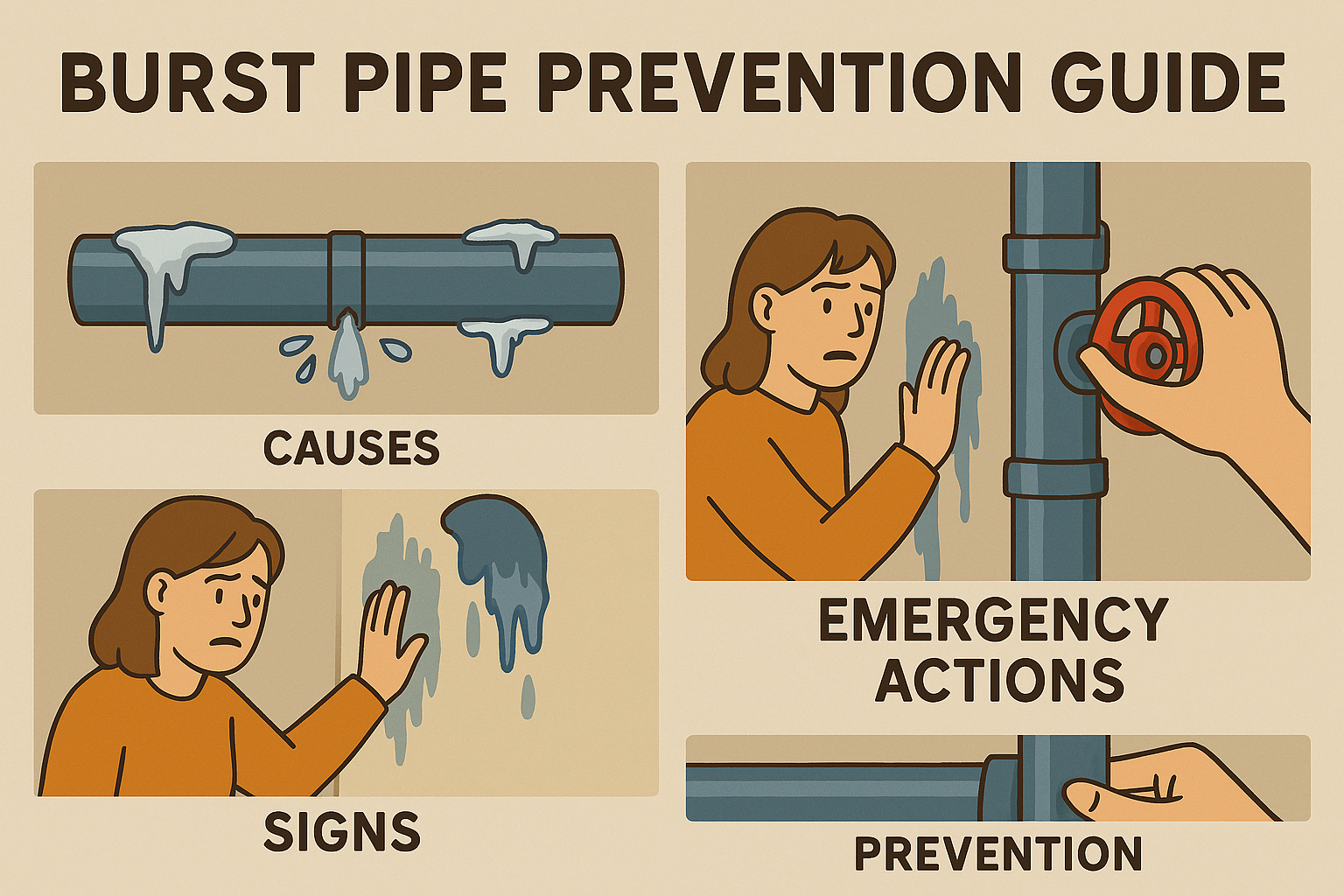Burst pipe prevention is crucial for every homeowner, especially in colder climates where freezing temperatures can wreak havoc on plumbing. The damage, repair costs, and stress caused by a burst pipe can be overwhelming. While it’s important to know how to respond if a pipe bursts, taking proactive steps to prevent one from happening in the first place offers the best peace of mind.
Why Pipes Burst
Although freezing temperatures are the most common cause of pipe bursts, several other issues can also lead to this disaster:
1. Corrosion and pH Imbalance
If your home’s water has an imbalanced pH or high iron content (common in well water), your pipes can corrode. Over time, this corrosion may lead to leaks or bursts.
2. Clogs and Pressure
A deep clog can cause water pressure to build up in the pipes. With nowhere else to go, the pressure can cause the pipe to rupture.
3. Freezing Water
Water expands when frozen. This pressure can split a pipe, especially when combined with sudden hot water usage. Rapid expansion weakens pipes and leads to bursts.
Signs of a Burst Pipe
Not all burst pipes are immediately visible. Look out for these symptoms:
- Water Puddles: Unexplained pools of water signal a leak.
- Low Water Pressure: A hole in a pipe means less water at your tap.
- Wall or Ceiling Stains: Watermarks near the leak help identify the location.
- Rusty or Smelly Water: Metallic smells and reddish color often mean pipe corrosion.
- High Water Bills: A spike in usage could mean a hidden leak.
- Unusual Noises: Banging or dripping inside walls often indicates trouble.
What to Do If a Pipe Bursts
1. Shut Off Water & Heat
Immediately turn off the main water valve and your heating system to stop further damage. If water reaches outlets, also cut off the power.
2. Drain the Pipes
Open cold taps and flush toilets to empty water from the system. Then, do the same with hot taps to relieve pressure.
3. Locate the Burst
Look for bulging walls, ceiling stains, or dripping sounds. These signs often point to the source.
4. Call a Professional
Avoid DIY plumbing fixes. Hire a licensed plumber (and electrician, if needed) to handle repairs safely and legally.
5. Make Emergency Repairs
While waiting for a plumber, apply a repair sleeve or patch with rubber and clamps as a temporary fix.
6. Warm the Area
If cold weather caused the burst, increase your home’s temperature and use heaters or a hairdryer to thaw nearby frozen pipes.
7. Document the Damage
Photograph every detail of the damage — leaks, stains, broken items — to support your insurance claim.
8. Clean Up Quickly
Remove standing water, disinfect surfaces, and dry the area thoroughly using fans, heaters, or pumps to avoid mold.
How to Prevent Burst Pipes
1. Learn Your Shut-Off Valve Location
Knowing where and how to shut off water can reduce damage in an emergency.
2. Keep Your Home Warm
Set your thermostat to a consistent temperature, even during vacations.
3. Seal Cold Air Leaks
Insulate basements, garages, and attics to block drafts that cause freezing.
4. Leave Cabinet Doors Open
Help warm air circulate around under-sink pipes, especially in extreme cold.
5. Let Faucets Drip
Running water is less likely to freeze, so allow a slight drip during cold nights.
6. Disconnect Outdoor Hoses
Turn off exterior valves and drain hose lines before winter hits.
7. Insulate Exposed Pipes
Use foam, heat tape, or even newspaper to insulate vulnerable pipes, especially those along exterior walls.
Final Thoughts
Following this burst pipe prevention checklist can help you avoid one of the most damaging winter emergencies. Stay proactive and prepared — it’s the best way to keep your home dry and safe all season long.
